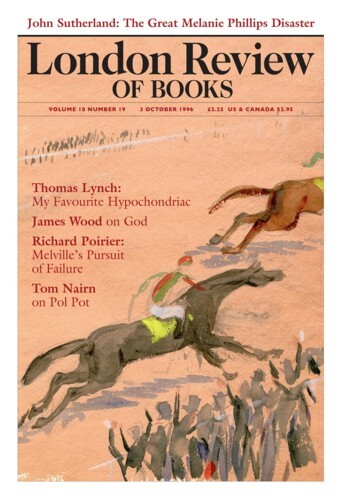Damp Souls
Tom Vanderbilt, 3 October 1996
In the United States, bestselling works of what is now called literary fiction tend to be aggressively regional – think of Jane Smiley’s Iowa, Jane Hamilton’s Midwest or E. Annie Proulx’s Newfoundland. They are literary postcards, nostalgic, often mawkish renderings of some quaint locale. Fulsomely praised as ‘generous’, ‘lyrical’, ‘redemptive’ and ‘luminous’, less Dirty Realism than stonewashed romanticism, they usually extol smalltown America, preferably the sort of place that’s pastoral and virtuous but in which one could still find a level of sophistication and a multiplicity of endearing eccentrics. Local colour works wonders, but since all colour is local (to rework Tip O’Neill), some universal truths should also be present and in the usual form – love, for instance, unrequited, gone wrong, renewed, consummated, young, forbidden, discovered, doomed, forgotten, repressed.’


